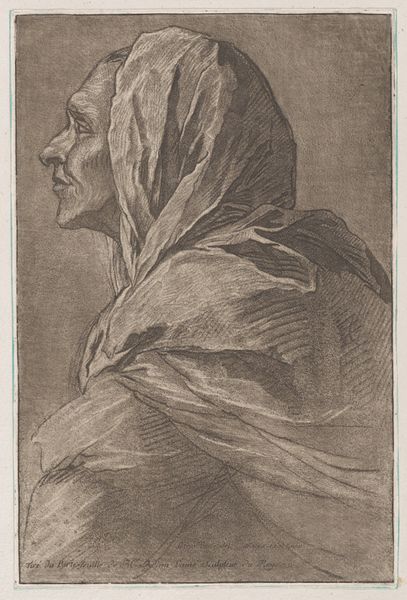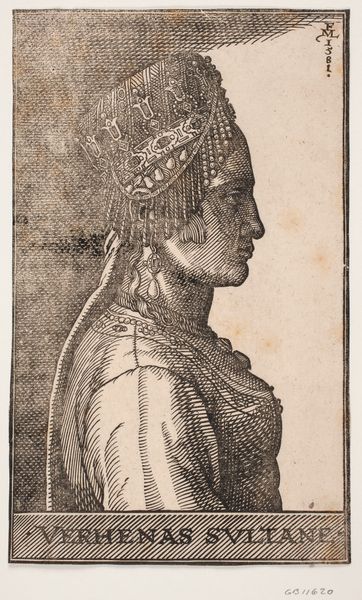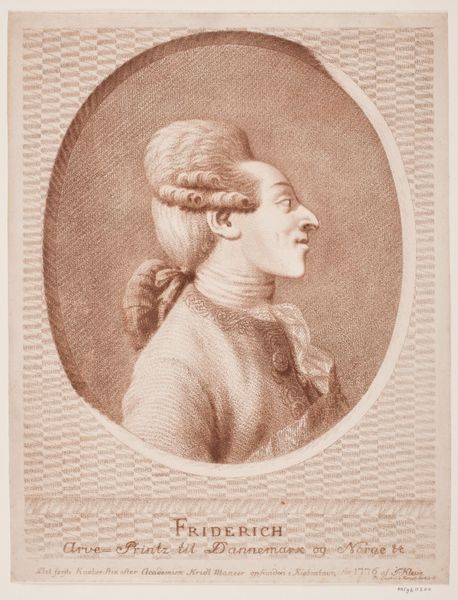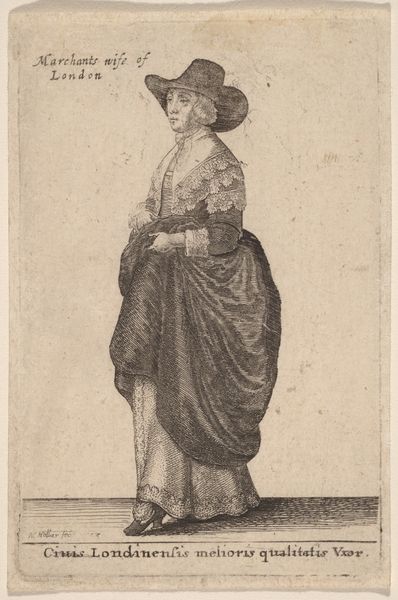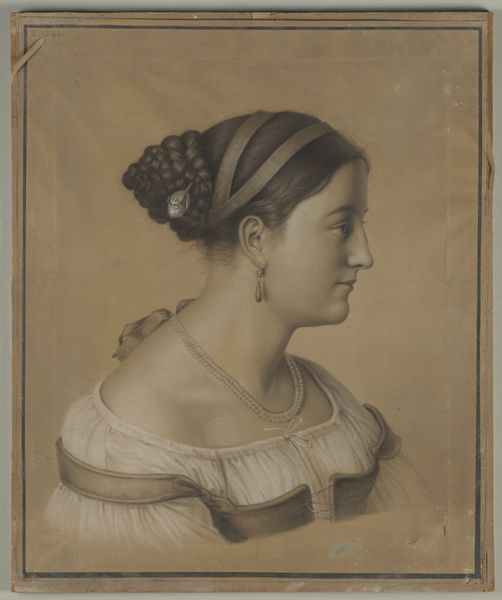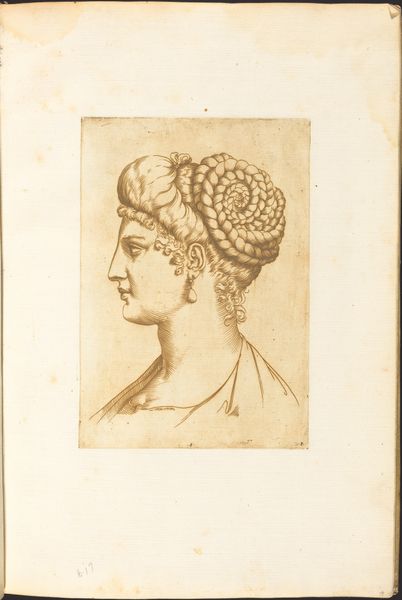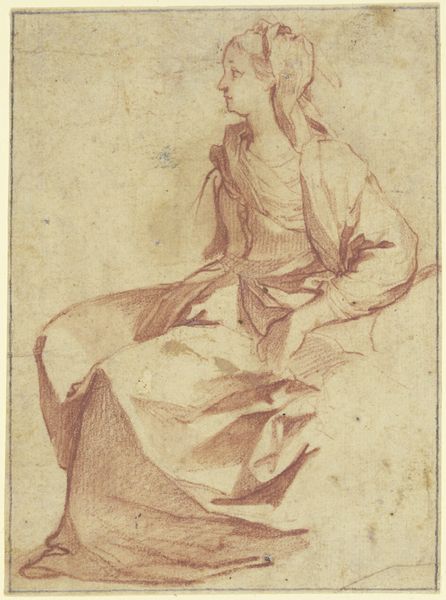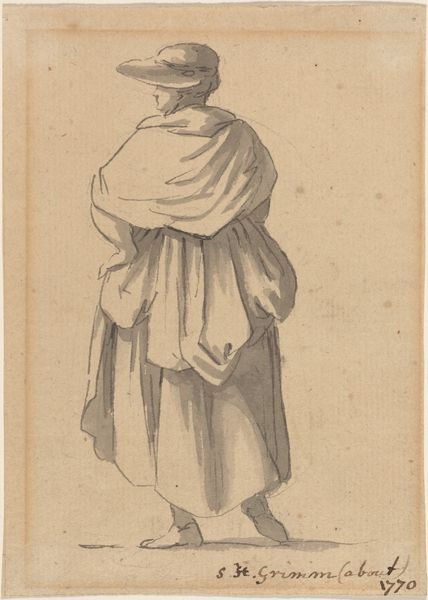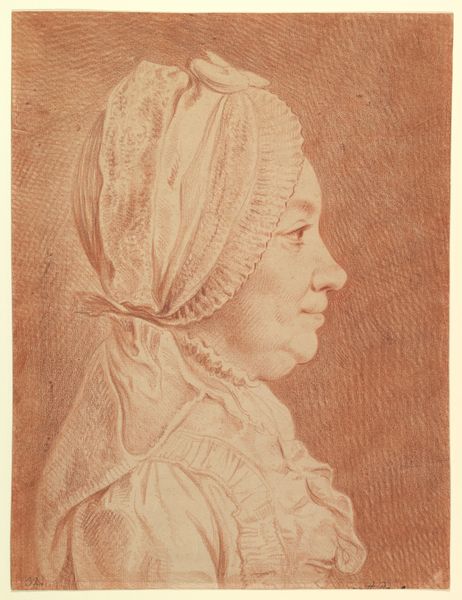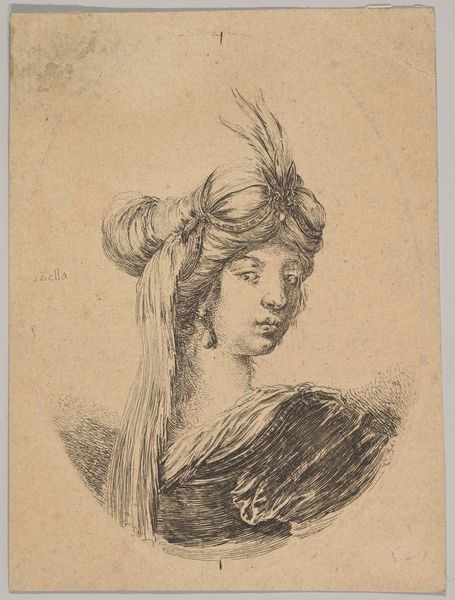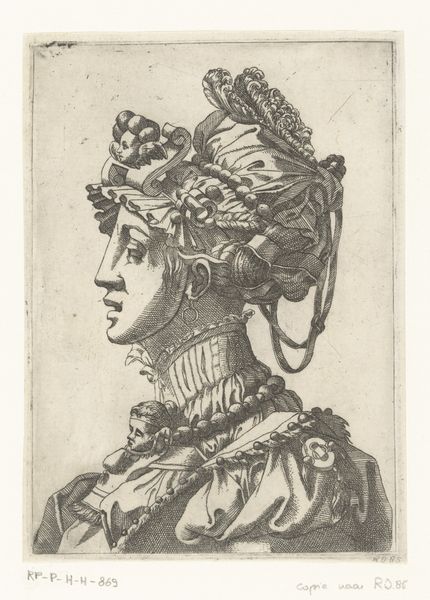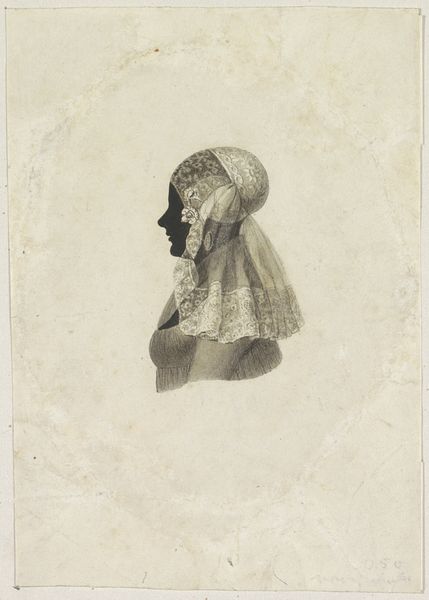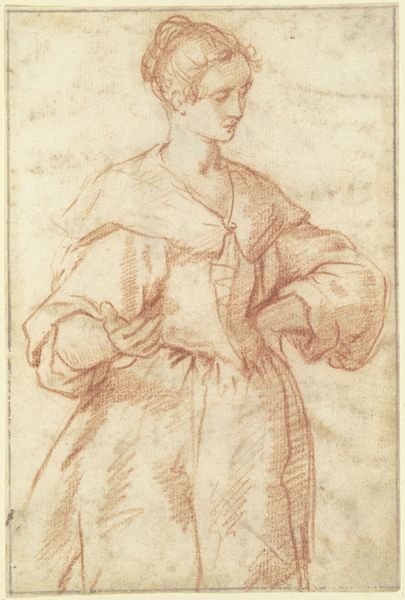
Dimensions: 543 × 375 mm
Copyright: Public Domain
Curator: Standing before us is "Muse Seen from the Back," a chalk drawing on paper, likely created in the 18th century. It now resides here at the Art Institute of Chicago. Editor: It’s arresting. Immediately, I notice how vulnerable yet dignified the figure appears, offering such an intimate, rear-facing view. The warmth of the chalk seems to enhance the figure's humanity. Curator: Absolutely. This period favored classical realism, evident in the precise anatomical rendering achieved through carefully layered chalk strokes, don't you agree? The visible hatching and cross-hatching demonstrate the labor involved in building up form and volume. Editor: Indeed, but I think it is important to consider what that particular hairstyle might symbolize during the 18th Century, beyond sheer artistry. Head coverings have historically signified modesty, status, or even cultural affiliation. This particular arrangement of cloth suggests a sense of controlled presentation, a curated identity for public viewing. Curator: Yes, there is definitely control in the application of the chalk! There is certainly an effort involved in achieving such detail with those dry materials. It requires precise tools, and deliberate execution. Also, look at the very visible lines which define and separate the subject from the background. Editor: It brings up the question of muse-hood itself. Was she aware of being observed, rendered into art? Is her "backstage" perspective a subtle comment on the act of artistic creation, the objectification inherent in turning a person into a subject? The lack of facial features creates an aura of universality, elevating the sitter into a symbolic representation of inspiration itself. Curator: It’s certainly a provocative reading. Thinking about it now I am looking at how those visible drawing methods almost humanizes the creative process, showing the steps in creating an artwork. It makes the whole process that much more transparent! Editor: Agreed, and thinking of that transparency, her turning away challenges viewers like us to look beyond the surface, to search for meaning beyond the gaze. It embodies the complexities of female representation in art through its symbolism and unique rendering. Curator: An insightful perspective indeed. Considering the artist’s choices regarding process, medium, and portrayal adds significantly to how we can appreciate it today. Editor: The drawing certainly encourages thoughtful contemplation beyond immediate visual appeal!
Comments
No comments
Be the first to comment and join the conversation on the ultimate creative platform.
